




Vape Bans: E-Cigarettes Restrictions in the US and Worldwide
AltPro Expo 2024 Upcoming Shows Vaping Taxes in the United States and Around the World Best Nicotine Pouches of 2024













Vape Bans: E-Cigarettes Restrictions in the US and Worldwide
AltPro Expo 2024 Upcoming Shows Vaping Taxes in the United States and Around the World Best Nicotine Pouches of 2024











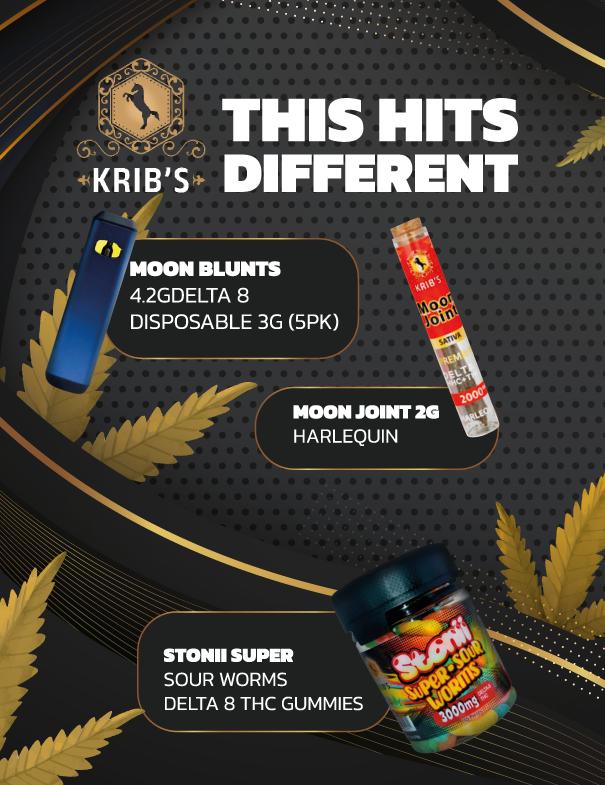


Phone number: +1 (631) 777-3455
Sales inquiries: sales@altproexpo.com
Marketing inquiries: media@altproexpo.com




THE NEXT GIANT LEAP STARTS RIGHT HERE,




As legal marijuana spreads across the United States, new concerns around accessibility, distribution, and automation are arising.
That’s not surprising if you consider that each year, the industry rakes in several billion dollars more than the last. It doesn’t appear that this growth will stop anytime soon. In fact, revenue from retail cannabis sales is projected to increase by an additional 13.93 percent between 2024 and 2028.
The demand for weed has skyrocketed in response to legalization, and even though there are more legal dispensaries than ever before, some medical and recreational consumers are being left out.
Brick-and-mortar dispensaries aren’t accessible to every prospective consumer. Large numbers of elderly, disabled, or anxiety-prone cannabis users are unable or unwilling to go to B&M weed dispensaries. For these people, delivery services are a godsend, offering access to high-quality legal cannabis products.
Other recreational users and medical patients are disadvantaged by geography alone. Although states with long-standing legality— I’m looking at you, California and Colorado— host dispensaries galore in their major cities, rural areas are often dry zones. Part of that

is just economics. It’s harder to make money selling anything when there are fewer potential customers in the area—so business owners tend to prefer more populated areas.
For customers in some of those areas, cannabis delivery may provide an answer. (However, some rural counties and municipalities have deliberately shut out commercial cannabis sales with restrictive local ordinances that apply even to delivery services.)
Cannabis delivery services are an innovation of the black market. Going back at least to the 1980s, enterprising weed dealers in densely populated cities like New York and San Francisco offered delivery to their customers, often by bicycle like other big city couriers used (and still use). But that’s another story.
Today, we’re examining legal cannabis delivery services—where they’re available, how they work, how to order, and their legality.
Point-of-sale (POS) and e-commerce software have automated retail into the superhighway it is today. Services geared specifically for marijuana distributors, including Dutchie and Cova, have streamlined both the customer-facing and back-end sides of the industry.
These software options are designed to lift some of the burden off transporters, business owners, and retail sellers. Delivery services in their current form wouldn’t exist if not for technical automation.
The ins and outs differ between services, but broadly, customers place their orders through a web browser or app—or sometimes by phone. Most delivery services are part of a brick-andmortar dispensary, but some are standalone operations. Either way, they usually offer direct ordering from their website and the option to use third-party portals like Leafly and Weedmaps. Shoppers may be asked for their address upfront to confirm that they’re within the delivery area. You’ll likely need to provide this info again at checkout. (Typically, you can create an account that saves the details so it’s quicker the next time you order.)
If all is running smoothly, shoppers can view the dispensary’s menu online, including sales and other special deals.
Vape carts, bud, and other popular weed products may be purchasable through a delivery service. Dab lovers can stock up on waxy concentrates like live resin. Some delivery services even carry vaping accessories or devices, including portable herb vaporizers and dab pens.
Add items to your cart before heading to the checkout. Make sure your order is set to delivery and not pick up, a more common service. You’ll be asked for information like proof of age, delivery window, and address. If you exceed your daily purchase limit, the order should fail to go through. Limits vary from state to state.
Same-day delivery drivers use GPS tracking to reach the address you’ve entered. Meanwhile, recipients can stay up to date with order tracking. A valid photo I.D. must be shown upon delivery— yes, even if you already provided your proof of age at checkout. All forms of identification will need to match up.
Most services require a residential address and deliver straight to your doorstep. In certain urban areas of California, it’s customary to meet drivers at their vehicles to protect those transporting and handing over sought-after goods. That said, deliveries occur during daylight to keep couriers and recipients safe, regardless of location.
4.8
Aptly nicknamed the “Uber of weed,” Eaze is a San Francisco-based cannabis delivery service catering to dozens of cities across California and Michigan. The Eaze mobile app effortlessly connects customers to local dispensaries. Browse menus, place an order, and have cannabis delivered straight to your doorstep.
As with any legal marijuana transaction, debit (cashless ATM) or cash payments are standard. Digital payment services like Zelle or CashApp might also be available. Credit card payments won’t be an option until weed is legalized federally, whether you’re shopping in-person or ordering ahead through the Internet.
Dutchie Pay, by way of a bank transfer, makes it possible to pay for an order in advance.
Tips are encouraged and delivery fees vary. Free at-home delivery isn’t certain, even for medical patients. These services are still considered a luxury that you’ll often need to pay extra for.

Cannabis delivery services are becoming a regular feature in many U.S. locations. They’re still not a guarantee, and even some recreational states have hit the brakes on non-medical delivery. States like New Jersey and Vermont permit medical marijuana delivery, while recreational transactions are in-person only.
Unsurprisingly, delivery services such as Weedmaps and Leafly experienced a sharp popularity surge at the height of COVID-19. That upward trend has continued into 2024.
Through 2020, Apple’s App Store rejected apps the company saw as promoting marijuana or vape products. Even legal dispensaries and delivery services were subject to removal. Policies have since been updated, and since
Nugg Club is the first and only marijuana subscription box.
Delivered to a growing number of California cities, each order is custom-tailored to the recipient’s preferences. Receive five to seven connoisseur-approved products valued at over $225, all for just $139 per box. That’s up to 65% off dispensary prices.
2021, legally compliant cannabis entities have been allowed by Apple.
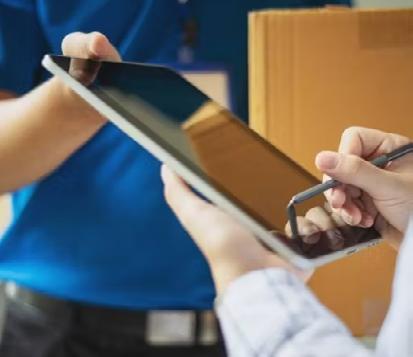
As of February 2024, the following U.S. states have legalized both recreational and medical cannabis delivery:
A number of others permit medical delivery only:
• Arizona
• Arkansas
• Delaware
• Florida
• Louisiana
• Maryland
Even if delivery is legal in your state, there’s always a chance that options will be limited or not available in your area.
California has embraced cannabis delivery with the fewest restrictions. Delivery services were responsible for approximately 55% of prepandemic cannabis sales in the Golden State, according to one expert’s estimate. Alaska and Washington are in another category entirely. Delivery by dispensaries isn’t permitted, but gifting marijuana products is. You may be able to throw down cash on a “gift” and have it delivered to you. We suggest using
• Montana
• New Jersey
• Rhode Island
• Utah
• Vermont
• Virginia
great caution if you decide to access these unregulated informal services. Don’t settle for fake vape carts or contaminated weed products out of convenience.
Certain U.S. states treat weed delivery more lightly than others. While licensure is required, Massachusetts couriers can deliver marijuana via third-party services like DoorDash or UberEats. Other states, particularly those limited to medical legalization, have created much greater barriers for couriers and recipients.
What cannabis delivery services are available?

Weed delivery services and apps are catching on. New options are likely to pop up, but for now, orders are most commonly placed through:
Unsure where to kick off your order? Check out the site of whichever dispensary you’re hoping to receive products from. You may be able to place a delivery order then and there, assuming the service is available.
Delivery services are either hub-based or ondemand, with the latter being more common in suburban and rural areas. Hub-based delivery services rely on inventory stored in one or more fixed locations. Couriers pick up orders from
hubs and drive them straight to the customer, much like your friendly neighborhood DoorDash driver.
On-demand cannabis delivery functions more like an ice cream truck than it does Grubhub. Vehicles are stocked with a roving inventory, so there’s no need to pick up new items between orders. These services generally serve fewer customers and have more ground to cover.
Legality depends on where you’re looking. A handful of states allow delivery that follows particular legal regulations, while many have barred these services altogether.
If you reside in a state without medical or recreational legalization, you aren’t going to find a legitimate delivery service, even if the products are coming to you from a state with legal weed. Marijuana delivery won’t help you avoid a drug trafficking charge, and delivering weed across state borders is a federal crime.
Before they’re permitted to deliver marijuana products of any kind, drivers usually must undergo training, background checks, and state-issued certification. With a license in hand,
drivers must abide by state-specific rules for storage, security, and hand-off. Infractions can quickly lead to a loss of license.
Partnering with unlicensed couriers, or attempting to deliver marijuana without a license, is illegal in all states.
Dispensaries and third-party services will also find themselves in hot water if they turn a blind eye to rule breakers. Should a delivery driver repeatedly fail to check I.D. cards upon delivery, their employer or contractor is expected to take appropriate action. Otherwise, the legal burden falls on them. Drivers may also be hit with suspension, fines, or other legal consequences of their own.

Before
they’re permitted to deliver marijuana products of any kind, drivers usually must undergo training, background checks, and state-issued certification.




Repeating the same expo, year after year Seeking deals for the savvy small business owner Still pushing products from last season's lineup Feeling out of touch with today's consumer demands 1. 3. 2. 4.







There are more than 40 countries that have some type of ban on vaping--either on possession and use, sales, importation, or a combination. What we have attempted is to list U.S. state flavor and online sales bans, and the sales and use bans imposed in other countries.

Government attitudes toward vaping and nicotine vary. In the United Kingdom, vaping has largely been encouraged by government health agencies. Because smoking creates a costly burden for the UK’s National Health Service, the country stands to save both lives and money if smokers switch to e-cigarettes.
Many other countries also allow a regulated vaping market, but are less enthusiastic about the practice. In the United States, the Food and Drug Administration (FDA) has had authority over vapor products since 2016, but has refused to create a plain system of standards for e-cigarettes and e-liquids. In recent years, some U.S. states have imposed flavor and online sales bans. Canada somewhat followed the U.K. model for a short time, but has recently imposed nicotine-strength limits and extreme flavor restrictions. There are more than 40 countries that have some type of ban on vaping---either on possession and use, sales, importation, or a combination. What we have attempted is to list U.S. state flavor and online sales bans, and the sales and use bans imposed in other countries.
U.S. bans on flavored vapes and online sales
The FDA has federal authority to regulate vaping products. In September 2020 the agency began reviewing Premarket Tobacco Applications (PMTAs), and has signalled it will not authorize flavored products without extraordinary evidence. Whether the agency will be successful creating an unwritten standard that eliminates legal flavored products (except tobacco and menthol) may be determined by federal courts.
Most vape bans in the U.S. happen at the state and local levels. And while a few California cities—notably San Francisco—have banned sales of all vaping products, most American vape restrictions involve flavors and online sales. There are only a few of each, despite the large number of vaping bans that have been proposed in state legislatures in recent years—proof that grassroots opposition can stop bad legislation.
Tobacco permits issued to Arkansas businesses only allow face-to-face transactions, so online sales are prohibited
California - flavor ban on in-store sales
California now bans the in-store sale of vaping products in flavors other than tobacco— with or without nicotine. The statewide law, approved by voters in 2022, does not ban online sales, but some localities have stricter laws
Georgia allows only face-to-face retail transactions of vaping products, so online sales are prohibited
Hawaii - online sales ban from out of state
Hawaii bans online sales from outside the state, except to licensed retailers
Maine - online sales ban
Maine bans online sales, except between licensed businesses
Massachusetts - flavor ban
The first statewide flavor ban was passed in late 2019 by Massachusetts. It includes all tobacco products, and prohibits sales of all vape flavors except tobacco
Nebraska - online sales ban
Nebraska passed an online sales ban in April 2024. It’s unclear when it will take effect.
New Jersey’s ban covers all flavors except tobacco. Legislators decided not to ban menthol cigarettes after realizing how much tax revenue the state would lose
New York - flavor ban + online sales ban
The New York flavor ban, which covers all flavors except tobacco, was passed in April 2020. The state also adopted an online sales ban (of all vaping products) at the same time
Oregon bans online sales, except between licensed businesses
Rhode Island - flavor ban
In March 2020, then-governor Gina Raimondo bypassed the state legislature and used the Department of Health to create a permanent ban on all vape flavors except tobacco
Shipping of all tobacco products (including vapes) is prohibited in South Dakota
Most vape bans in the U.S. happen at the state and local levels. And while a few California cities—notably San Francisco— have banned sales of all vaping products, most American vape restrictions involve flavors and online sales.
Utah bans online sales, except between licensed businesses. In March 2024, the state passed a ban on vape flavors (other than tobacco and menthol), which will take effect Jan. 1, 2025
Vermont bans online sales, except between licensed businesses
Major cities with flavor bans include Chicago, IL; Los Angeles, San Diego, Sacramento, Oakland and San Jose, CA; and Boulder, CO. Hundreds of smaller cities and counties—mostly in California and Massachusetts—have flavor bans, as do some larger cities whose bans have since been superseded by state bans (like New York City and Newark, NJ)

Complete bans on vaping product sales have been adopted by San Francisco and some smaller California cities. Brookline, Massachusetts has passed a so-called generational ban on tobacco and nicotine product sales (including vapes). The city increases the legal age to buy nicotine products by one year each year. No one born after Dec. 31, 1999, can ever buy nicotine products legally in Brookline
In some nations, vaping is completely illegal, including both sales and possession. Prohibition is most common in Asia, the Middle East, and South America. Australia has a bizarre prescriptiononly model for vaping products, and unauthorized importation can result in huge fines. In Japan, nicotine vaping products are illegal, but heated tobacco products like IQOS are completely legal and widely used.
Some countries have outright bans on sales and possession, others just prohibit sales, and some ban only nicotine-containing products. In many countries, the laws are ignored and black markets flourish. In others, they’re enforced (but those still have black markets too). If a country is not listed, vaping is either allowed and regulated, or there is no specific law governing e-cigarettes (as of now anyway).
This isn’t meant as a definitive legal guide for traveling vapers. If you’re visiting an unfamiliar country you should first check with an up-to-date official source like your country’s state department, or the travel bureau of the country you’re visiting.
Antigua and Barbuda
Legal to use
illegal to sell
Cambodia Banned
illegal to use
Argentina Chile
Legal to use
Australia
Legal to use
illegal to sell
Legal to use, illegal to possess nicotine without a doctor’s prescription. Importing nicotine illegally can be punished with fines of up to $222,000. Penalties for possession vary from one state to the next, and can be severe
Bangladesh
Bangladesh currently has no laws or regulations specific to vaping. However, in 2021 the government announced it would update the country’s tobacco control law with an outright ban on the sales of e-cigarettes
Bhutan
Legal to use
Brazil
Legal to use
Brunei Darussalam
Legal to use
illegal to sell
illegal to sell
Legal to use
Colombia
Legal to use
illegal to sell
illegal to sell
illegal to sell
(however, the prohibition is widely disregarded)
illegal to use
illegal to sell
Believed to be illegal to use, illegal to sell
Egypt
Legal to use
Ethiopia
Legal to use
illegal to sell
illegal to sell
Believed to be legal to use, illegal to sell
Gambia
illegal to use
illegal to sell
illegal to sell
Believed to be illegal to use, illegal to sell
Legal to use
(except when prescribed by a doctor)
Hong Kong
Legal to use illegal to sell illegal to sell since 2022
(a Special Administrative Region of China)
India
Legal to use, illegal to sell. In September 2019, the Indian central government banned the sale of vaping products. The government, well aware that 100 million Indians smoke and that tobacco kills nearly a million people a year, did not make any moves to reduce access to cigarettes. Not coincidentally, the Indian government owns a large share of the country’s largest tobacco company
Iran
illegal to use illegal to sell
Believed to be illegal to use, illegal to sell
Jamaica
Legal to use
illegal to sell nicotine-containing products without a medical license
Legal to use, legal to sell devices and zeronicotine e-liquid, but illegal to sell nicotinecontaining liquid (although individuals can import nicotine-containing products with some restrictions). Heated tobacco products (HTPs) like IQOS are legal and extremely popular
Kuwait
Legal to use
Believed to be legal to use, illegal to sell
Lao People’s Democratic Republic (Laos)
illegal to use illegal to sell
Lebanon
Legal to use illegal to sell illegal to sell
Macau (a Special Administrative Region of China)

Possibly legal to use, illegal to sell. In late 2022 a law took effect that bans the manufacture, distribution, sale, import, export, and transport of all vaping products. While personal use may be technically legal, there seems to be no way to acquire products without violating the import or transport bans
Legal to use, illegal to sell nicotine-containing products. Although consumer sales of nicotinecontaining products is illegal, Malaysia has a thriving vaping market. Authorities occasionally raid retailers and confiscate products. Sales of all vaping products (even without nicotine) are banned outright in the states of Johor, Kedah, Kelantan, Penang and Terengganu
Mauritius
Legal to use illegal to sell
Mexico
Probably legal to use, illegal to sell. The Mexican president issued a decree banning sales of all vapes and heated tobacco products in May 2022. The law includes nicotine-free products. It is, however, widely ignored and Mexico has a thriving black market.
Some manufacturers---including Philip Morris International and British American Tobacco---and vendors have challenged the government position in court, filing individual complaints and receiving favorable judgements. Unfortunately, these “juicio de amparo” (protection trials) apply only to the specific complainant and the decisions cannot be broadly applied by all sellers. According to Mexican vape advocate Roberto Sussman, the amparo process is difficult and expensive, especially for small businesses
Myanmar illegal to use illegal to sell
Believed to be illegal to use, illegal to sell
Nepal
Legal to use possibly illegal to sell
(although the government itself seems unsure)
Nicaragua illegal to use illegal to sell
Believed to be illegal to use, illegal to sell
North Korea (Democratic People’s Republic of Korea) Banned illegal to use illegal to sell
Oman
Legal to use
Believed to be legal to use, illegal to sell
Palau Banned
Panama
Legal to use illegal to sell illegal to sell
Qatar Banned illegal to use illegal to use illegal to sell illegal to sell
Legal to use
illegal to sell
However, the country announced in 2019 its intention to legalize and regulate e-cigarettes
Singapore Banned
Legal to use
illegal to sell
Legal to use
illegal to import
Sri Lanka
Legal to use
Suriname
Legal to use
Syria Banned
illegal to use illegal to use
Turkey’s laws are conflicting, and there is a vaping market and a vaping community in Turkey
As of 2018, possession of vapes is a crime, punishable by fines and even prison time. However, the threat of prosecution doesn’t prevent a thriving black market
Legal to use illegal to sell
Believed to be legal to use, illegal to sell
illegal to sell
Uganda
Legal to use
illegal to sell
illegal to sell illegal to sell
Taiwan (Republic of China) Banned
illegal to use
Thailand
illegal to sell
Believed to be legal to use, illegal to sell. Thailand has earned a reputation for enforcing its ban on importation and sales of vaping products with several high-profile incidents in recent years, including detaining and even deporting tourists caught vaping
Uruguay
Legal to use
Vatican City
illegal to use
illegal to sell
illegal to sell
illegal to sell
Believed to be illegal to use, illegal to sell
Venezuela Banned
illegal to use
illegal to sell
In August 2023, the Venezuelan health ministry banned the sale and personal use of all vaping and heated tobacco products on order of President Maduro
Our list is extensive, but maybe not definitive. Laws change frequently, and there is no central repository for information on worldwide vaping laws that is updated in real time. While our list includes some original research, these are the primary sources:
The Global State of Tobacco Harm Reduction (Knowledge-Action-Change)

Tobacco Control Laws (Campaign for Tobacco-Free Kids)
Institute for Global Tobacco Control (Johns Hopkins University)
We welcome any new information you may have. If you know of a law that has changed, or a new regulation that affects our list, please make a comment and we will update the list.



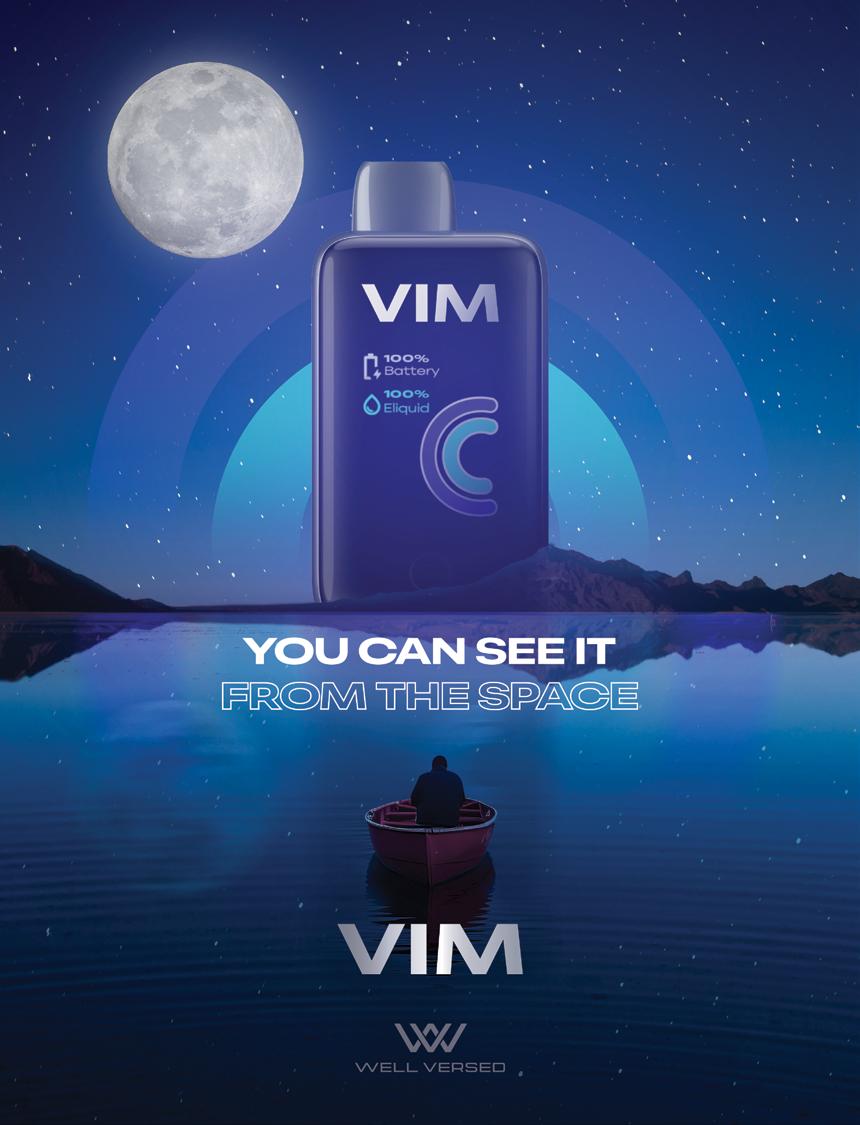




OCTOBER 10-12, 2024
COBB GALLERIA CENTRE
MARCH 6-8, 2025
MANA WYNWOOD CONVENTION CENTER
PRESENTED BY PRESENTED BY










As vaping grows in popularity, it becomes a natural target for governments in need of tax revenue. Because vapor products are usually bought by smokers and ex-smokers, tax authorities correctly assume that money spent on e-cigarettes is money not being spent on traditional tobacco products. Governments have depended upon cigarettes and other tobacco products as an income source for decades.
Whether vaping devices and e-liquid deserve to be taxed like tobacco is almost beside the point. Governments see them pushing smokers away from tobacco, and they understand that the lost revenue must be
made up. Since vaping looks like smoking, and there is substantial public health opposition to vaping, it becomes an attractive target for politicians, especially because they can justify the tax with a variety of questionable health claims.
Vape taxes are now being proposed and passed regularly in the United States and elsewhere. Taxes are usually opposed by advocates for tobacco harm reduction, representatives of vaping industry trade groups, and vaping consumers, and they’re supported by tobacco control organizations, doctors, and the lung, heart and cancer associations.
Taxes on specific products—usually called excise taxes—are applied for various reasons: to raise money for the taxing authority, to change the behavior of those being taxed, and to offset environmental, medical, and infrastructure costs created by the use of products. Examples include taxing alcohol to dissuade excessive drinking, and taxing gasoline to pay for road maintenance.
Tobacco products have long been a target for excise taxes. Because the harms of smoking impose costs on the whole society (medical care for smokers), proponents of tobacco taxes say that tobacco consumers should foot
the bill. Sometimes excise taxes on alcohol or tobacco are called sin taxes, because they also punish the behavior of drinkers and smokers—and in theory help convince the sinners to quit their wicked ways. But because the government becomes dependent on the tax revenue, a decline in the smoking rate creates a financial shortfall that must be made up with some other source of income, or else the government must reduce spending. For most governments, the cigarette tax is a significant revenue source, and the excise is charged in addition to the standard sales tax assessed on most consumer products.

Most U.S. consumers pay a state (and sometimes also local) sales tax on the vaping products they purchase, so governments already benefit from vape sales even before excise taxes are added. Sales taxes are usually assessed as a percentage of the retail price of the products being purchased. In many other countries, consumers pay a “value added tax” (VAT) that works the same way as a sales tax. As for excise taxes, they come in a couple of basic varieties.
One of the most common forms of vape tax is assessed at retail. Some taxes cover all vaping products (like New York State’s 20% tax), and others target e-liquid only. Sometimes the tax is only charged on sales of nicotine-containing e-liquid.
Wholesale taxes are ostensibly charged to the wholesaler (usually a distributor) selling products to a business that will resell them at retail sites in the state. The tax is usually a percentage of the wholesale price (cost). It may be assessed on all vaping products or just nicotine-containing ones. Although
wholesale taxes are not collected from the end user of the product, the cost of the tax is usually factored into the retail price of the product.
There is no federal tax on vaping products in the U.S. Bills have been introduced in Congress to tax vapes, but none has so far gained enough support to pass.
Before 2019, nine states and the District of Columbia taxed vaping products. That number more than doubled in the first seven months of 2019, when the moral panic over JUUL and teenage vaping pushed legislators to do something to “stop the epidemic.”
As of early 2024, 31 U.S. states have a tax on vapor products, along with some cities and counties, and the District of Columbia and Puerto Rico.
Alaska doesn’t have a state tax, but some municipalities have their own vape taxes:
Juneau Borough, NW Arctic Borough and Petersburg Borough have identical 45% wholesale taxes on nicotinecontaining products
Anchorage Borough has a 55% wholesale tax
Matanuska-Susitna Borough has a 55% wholesale tax
The California wholesale tax on “other tobacco products” is set yearly by the state Board of Equalization. It mirrors the percentage of all taxes assessed on cigarettes. Originally this amounted to 27% of the wholesale cost, but after Proposition 56 increased the tax on cigarettes from $0.87 to $2.87 a pack, the vape tax increased drastically. For the year beginning July 1, 2023, the tax is 56.32% of the wholesale cost for all nicotine-containing products.
On July 1, 2022, California added a retail tax to the existing wholesale tax—12.5% on all nicotine-containing vaping products, including those bought online from retailers in other states.
The current tax in Colorado is 56% of manufacturer’s list price on all nicotinecontaining vapor products (including bottled e-liquid). The tax, approved by Colorado voters in 2020, launched in 2021 at 30%, escalated to 35% in 2022, then to 50% in 2023. It rose to 56% in 2024, and will increase to 62% in 2027. The tax is 50% lower for products given a Modified Risk (MRTP) designation by the FDA (but no manufacturer of a liquid-based vaping product has even applied for an MRTP authorization)
The state has a two-tiered tax on nicotinecontaining vape products: $0.40 per milliliter on e-liquid in closed-system products (pods, cartridges, disposables), and 10% wholesale on open-system products, including bottled e-liquid and devices
A tax of $0.05 per milliliter on nicotinecontaining e-liquid
The nation’s capital classifies vapes as “other tobacco products,” and assesses a tax on the wholesale price based on a rate that is indexed to the wholesale price of cigarettes. The tax is currently set at 91% of wholesale cost for devices and nicotine-containing e-liquid
Georgia
A tax of $0.05 per milliliter on e-liquid in closed-system products (pods, cartridges, disposables), and a 7% wholesale tax on opensystem devices and bottled e-liquid. The taxes apply to products with and without nicotine
Hawaii
A 70% wholesale tax on all vaping products
Illinois
A 15% wholesale tax on all vaping products. The tax applies to products with and without nicotine. In addition to the statewide tax, both Cook County and the city of Chicago (which is in Cook County) have their own vape taxes:
Chicago assesses a $1.50 per unit tax on any vaping product containing nicotine (bottled e-liquid or prefilled devices) and a separate $1.20 per milliliter tax on the liquid itself. (Chicago vapers also must pay the $0.20 per mL Cook County tax)
Cook County taxes products containing nicotine at a rate of $0.20 per milliliter
Indiana
A 15% tax on retail gross on all vaping product sales, with or without nicotine
Kansas
A tax of $0.05 per milliliter on all e-liquid. The tax applies to products with and without nicotine
Kentucky
A 15% wholesale tax on bottled e-liquid and open-system devices, and a $1.50 per unit tax on prefilled pods and cartridges. The taxes apply to products with and without nicotine
A tax of $0.15 per milliliter on nicotinecontaining e-liquid
A 43% wholesale tax on all vaping products. The tax applies to products with and without nicotine
Maryland
A 12% retail tax on open-system vaping products and bottled e-liquid, and a 60% tax on nicotine-containing e-liquid in containers with a capacity under 5 milliliters (pods, cartridges, disposables). In addition to the state tax:
Montgomery County imposes a 30% wholesale tax on all vaping products, including devices sold without liquid
Massachusetts
A 75% wholesale tax on all vaping products. The tax applies to products with and without nicotine. The law requires consumers to produce proof that their vaping products have been taxed, or they are subject to seizure and a fine of $5,000 for the first offense, and $25,000 for additional offenses
In 2011 Minnesota became the first state to impose a tax on e-cigarettes. The tax was originally 70% of wholesale cost, but was increased in 2013 to 95% of wholesale on finished products that contain nicotine (cigalikes, pod vapes, bottled e-liquid) and are transported from out of state. However, for bottled e-liquid produced in Minnesota, only the nicotine itself is taxed
Nebraska has a two-tiered tax, depending on the size of the e-liquid container (or prefilled vape). For products containing less than 3 milliliters of e-liquid, the tax is $0.05/mL. For products containing 3 mL or more, there is a 10% wholesale tax. The tax applies only to products that contain nicotine. In addition to the state tax:
Omaha includes vaping products in the city’s 3% tobacco tax
Nevada
A 30% wholesale tax on all vapor products. The tax applies to products with and without nicotine
New Hampshire
An 8% wholesale tax on open-system vaping products (including nicotinecontaining e-liquid), and $0.30 per milliliter on closed-system products (pods, cartridges, disposables)
New Jersey
New Jersey taxes nicotine-containing e-liquid at $0.10 per milliliter in pod- and cartridgebased products, 10% of the retail price for bottled e-liquid, and 30% wholesale for devices
New Mexico
New Mexico has a two-tiered e-liquid tax: 12.5% wholesale on bottled e-liquid, and $0.50 on each pod, cartridge, or cigalike with a capacity under 5 milliliters. The taxes apply to products with and without nicotine
New York
A 20% retail tax on all vapor products. The tax applies to products with and without nicotine
North Carolina
A tax of $0.05 per milliliter on nicotinecontaining e-liquid

A tax of $0.10 per milliliter on nicotinecontaining e-liquid
A 65% wholesale tax on all non-cannabis “inhalant delivery systems,”, including hardware and “components” (which includes e-liquid). The tax also includes heated tobacco products (HTPs) like IQOS, but exempts all vaping products sold in licensed cannabis dispensaries. The tax applies to products with and without nicotine
A 40% wholesale tax on e-liquid and devices that are sold with e-liquid included. The tax applies to products with and without nicotine
Puerto Rico
A tax of $0.05 per milliliter on e-liquid, and a $3.00 per unit tax on e-cigarettes
Utah
A 56% wholesale tax on e-liquid and prefilled devices. The tax applies to products with and without nicotine
Vermont
A 92% wholesale tax on e-liquid and devices— the highest tax imposed by any state. The tax applies to products with and without nicotine
Virginia
A tax of $0.066 per milliliter on nicotinecontaining e-liquid
Washington State
Washington has a two-tiered tax: $0.27 per milliliter on e-juice in pods and cartridges
smaller than 5 mL in size, and $0.09 per milliliter on liquid in containers larger than 5 mL. The taxes apply to products with and without nicotine
West Virginia
A tax of $0.075 per milliliter on all e-liquid. The tax applies to products with and without nicotine
Wisconsin
A tax of $0.05 per milliliter on e-liquid in closed-system products (pods, cartridges, disposables) only. The tax applies to products with and without nicotine
Wyoming
A 15% wholesale tax on all vaping devices and nicotine-containing e-liquid

As in the United States, legislators around the world don’t really understand vapor products.
As in the United States, legislators around the world don’t really understand vapor products. The new products seem to lawmakers like a threat to cigarette tax revenue (which they truly are), so their impulse is often to impose high taxes and hope for the best.
Conversions to U.S. currency are estimates. No conversion is done for the European Union euro (€), which closely mirrors the U.S. dollar in value.

Albania
A tax of 10 leke ($0.091 US) per milliliter on nicotine-containing e-liquid
Azerbaijan
A tax of 20 manats ($11.60 US) per liter (about $0.01 per milliliter) on all e-liquid
Bahrain
The tax is 100% of the pre-tax price on nicotinecontaining e-liquid. That supposedly equates to 50% of the retail price. The purpose of the tax is unclear, since vapes are supposedly banned in the country
Belgium
A tax of €0.15 per milliliter on all e-liquid
Canada
A federal tax of 1 Canadian dollar (about $0.75 US) per 2 milliliters (or fraction thereof) on the first 10 mL in any bottle, pod, or cartridge, then $1 per additional 10 mL (or fraction thereof). The tax applies to all vaping products, with or without nicotine. Individual provinces may have additional taxes of their own
China has a two-pronged wholesale tax, assessing a 36% rate on the production or import of e-cigarettes, and a separate 11% tax on wholesale domestic distribution
Costa Rica
A 20% wholesale tax on all vaping products and accessories
Croatia
Although Croatia has an e-liquid tax on the books, it is currently set at zero
Cyprus
A tax of €0.12 per milliliter on all e-liquid
A tax of DKK 2.00 ($0.30 US) per milliliter on all e-liquid
A 150% wholesale tax on “other tobacco products” includes vaping products
In 2018, Estonia imposed a €0.20 per milliliter excise duty on all e-liquid. In December 2020, the Riigikogu (parliament) suspended the tax—effective from April 1, 2021 and lasting until Dec. 31, 2022—with the goal of ending the large black market that has grown in the wake of the excessive tax (and a flavor ban). According to consumer nicotine group NNA Smoke Free Estonia, “self-mixed, cross-border and smuggled e-liquids account for 62-80% of the entire Estonian e-liquids market”
Finland
A tax of €0.30 per milliliter on all e-liquid
Georgia
A tax of 0.2 Georgian Lari ($0.066 US) per milliliter on all e-liquid
Germany
A tax of €0.20 per milliliter on all e-liquid. The tax took effect in 2022 at €0.16/mL, and increased Jan. 1, 2024 to its current level. It will rise again on Jan. 1, 2025 to €0.26/mL, and then again on Jan. 1, 2026 to €0.32/mL
Greece
A tax of €0.10 per milliliter on all e-liquid
A tax of HUF 20 ($0.07 US) per milliliter on all e-liquid
The Indonesian excise tax is 57%, and seems to only be meant for nicotine-containing e-liquid (“extracts and essences of tobacco” is the wording). In 2024, Indonesia has added an additional tax on vaping products, set at 10% of the excise tax
On March 3, 2024, the Israeli Tax Authority increased the e-liquid tax to “not less than” 10.04 NIS (New Israeli Shekels) per milliliter (equivalent to $2.76US per mL—nearly $83 for a 30 mL bottle). The authority also announced that the tax will increase in July to not less than 18.60 NIS/mL. The tax applies to e-liquid with or without nicotine, and includes e-liquid contained in bottles, pods, and disposable vapes
As of 2023, tax rates were €0.14 per milliliter for nicotine-containing e-liquid, and €0.09 for zero-nicotine products
Devices and nicotine-containing e-liquid are taxed at a rate of 200% of the CIF (cost, insurance and freight) value
Although Kazakhstan has an e-liquid tax on the books, it is currently set at zero
Kenya updated its excise duty rate on vaping products in 2022. The current rates are 40% for devices, and 70 Kenyan shillings ($0.57 US) per milliliter on e-liquid
A tax of 1 Kyrgyzstani Som ($0.014 US) per milliliter on nicotine-containing e-liquid
Latvia updated its excise tax rates in October 2023, simplifying and increasing vaping and tobacco taxes. From March 1 to Dec. 31, 2024, e-liquid will be taxed at a rate of €0.24 per milliliter. From Jan. 1 to Dec. 31, 2025, the rate will increase to €0.29/mL. Beginning Jan. 1, 2026, the rate will go up to €0.35/mL
A tax of €0.12 per milliliter on all e-liquid
A 10% tax on vaping devices and a 40 sen ($0.10 US) per milliliter tax on e-liquid. However, the government announced Oct. 29, 2021 that it would begin taxing nicotine-containing liquid, which will require a change in the law that prohibits sales of nicotine-containing products except by pharmacies. (In early 2022, this tax was postponed)
Nicotine-containing e-liquid is taxed at a rate of 200% of the CIF (cost, insurance and freight) value
Montenegro
A tax of €0.90 per milliliter on all e-liquid
A tax of 0.2 Macedonian Denar ($0.0036 US) per milliliter on e-liquid. The law allows automatic increases in the tax rate July 1 of each year from 2020 to 2023
Norway
A tax of 4.5 Norwegian Krone ($0.51 US) per milliliter on all e-liquid
Paraguay
The law classifies e-cigarettes as tobacco products, and taxes them at 16% (probably based on wholesale price). However, most sellers don’t register the products as tobacco, but import them under other classifications
Philippines
As of 2023, the country imposed a tax of 52 Philippine pesos (PHP) per milliliter for nicotine salt-based e-liquids, and 60 PHP per mL for freebase nicotine e-liquids, according to the Philippine News Agency. From 2024 onward, the tax is scheduled to increase by 5% each year
Poland
A tax of 0.55 Polish Zloty (PLN) ($0.14 US) per milliliter on all e-liquid
Portugal
A tax of €0.323 per milliliter on nicotinecontaining e-liquid
Romania
A tax of 0.52 Romania Leu ($0.12 US) per milliliter on nicotine-containing e-liquid. The tax can be adjusted annually based on consumer price increases
Russia
Disposable products are taxed at 50 rubles ($0.81 US) per unit. Nicotine-containing
e-liquid is taxed at 13 rubles per milliliter
Saudi Arabia
The tax is 100% of the pre-tax price on e-liquid and devices. That supposedly equates to 50% of the retail price
Serbia
A tax of 4.32 Serbian Dinar ($0.044 US) per milliliter on all e-liquid
Slovenia
A tax of €0.18 per milliliter on nicotinecontaining e-liquid
A tax of 2.90 Rand (about $0.15 U.S.) per milliliter on all e-liquid
The first country to impose a national vape tax was the Republic of Korea (usually called South Korea in the West)—in 2011, the same year Minnesota began taxing e-liquid. Currently the country has four separate taxes on e-liquid, each earmarked for a specific spending purpose (the National Health Promotion Fund is one). The various South Korean e-liquid taxes add up to a whopping 1,799 won ($1.60 US) per milliliter, and there is also a waste tax on cartridges and pods of 24.2 won ($0.02 US) per 20 cartridges. However, the tax apparently applies only to tobaccoderived nicotine products, leaving e-liquid made with synthetic nicotine untaxed
A tax of 2 Swedish krona (SEK) per milliliter ($0.22 US) on nicotine-containing e-liquid up to 15 mg/mL. E-liquid containing 15-20 mg/mL is taxed at 4 SEK/mL
Taxed up to 45% (believed to be based on the wholesale price)
A tax of 3 Ukrainian hryvnia (UAH) ($0.11 US) per milliliter on all e-liquid
The tax is 100% of the pre-tax price on e-liquid and devices. That supposedly equates to 50% of the retail price
Global Tobacco Control says an excise tax of 500 Uzbekistani so’m per milliliter ($0.05 US) was introduced on e-liquid in 2020, but we could find no confirmation or additional details.
Ultimately, the widespread implementation of vaping taxes reflects a complex interplay between public health goals and government revenue needs.

• DADAFO, the Danish Vapers Association
• The IGEN Blog
• Global Tobacco Control (Johns Hopkins University)
• National Association of Tobacco Outlets (NATO)
• Public Health Law Center
• Tax Foundation/
• Campaign for Tobacco-Free Kids
• World Bank (last updated April 2019)
Vaping360 appreciates any updates or corrections to the posted tax rates. Please comment below, and provide supporting information (newspaper articles, links to government websites, etc.) if it’s available.

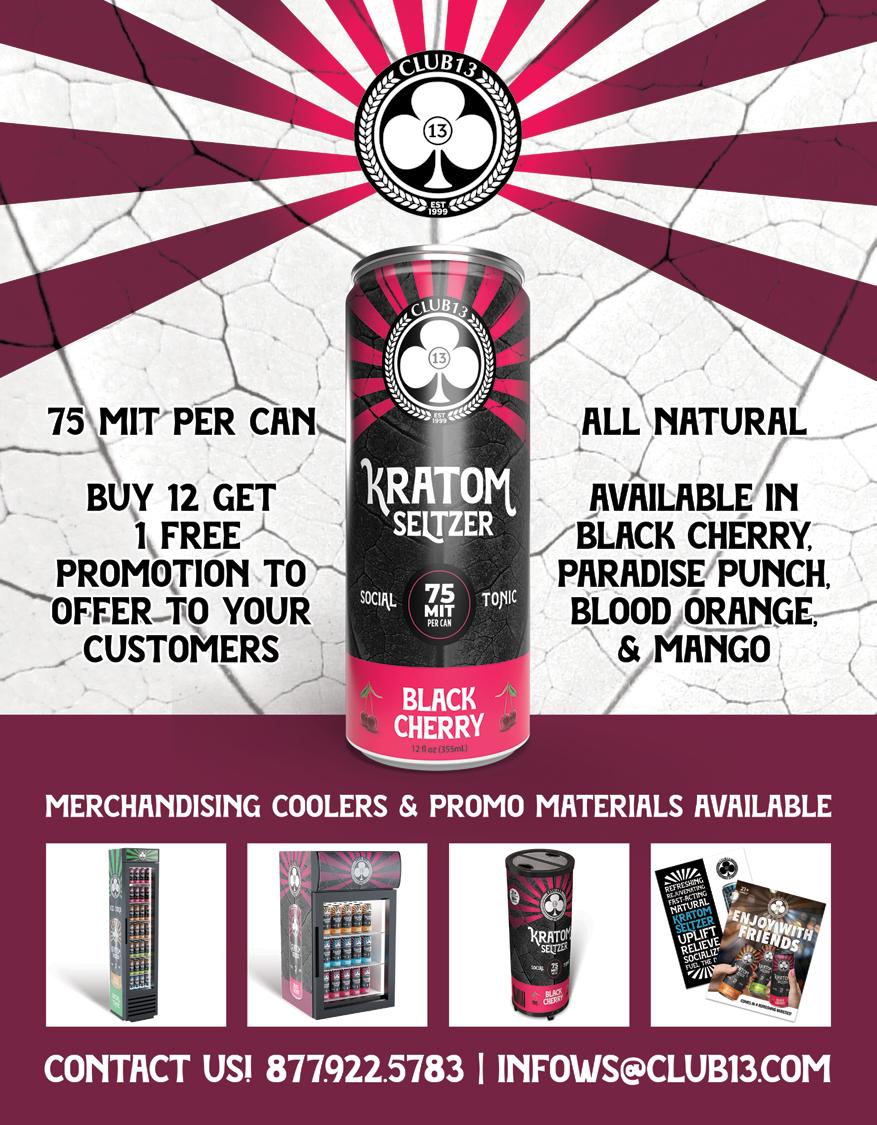






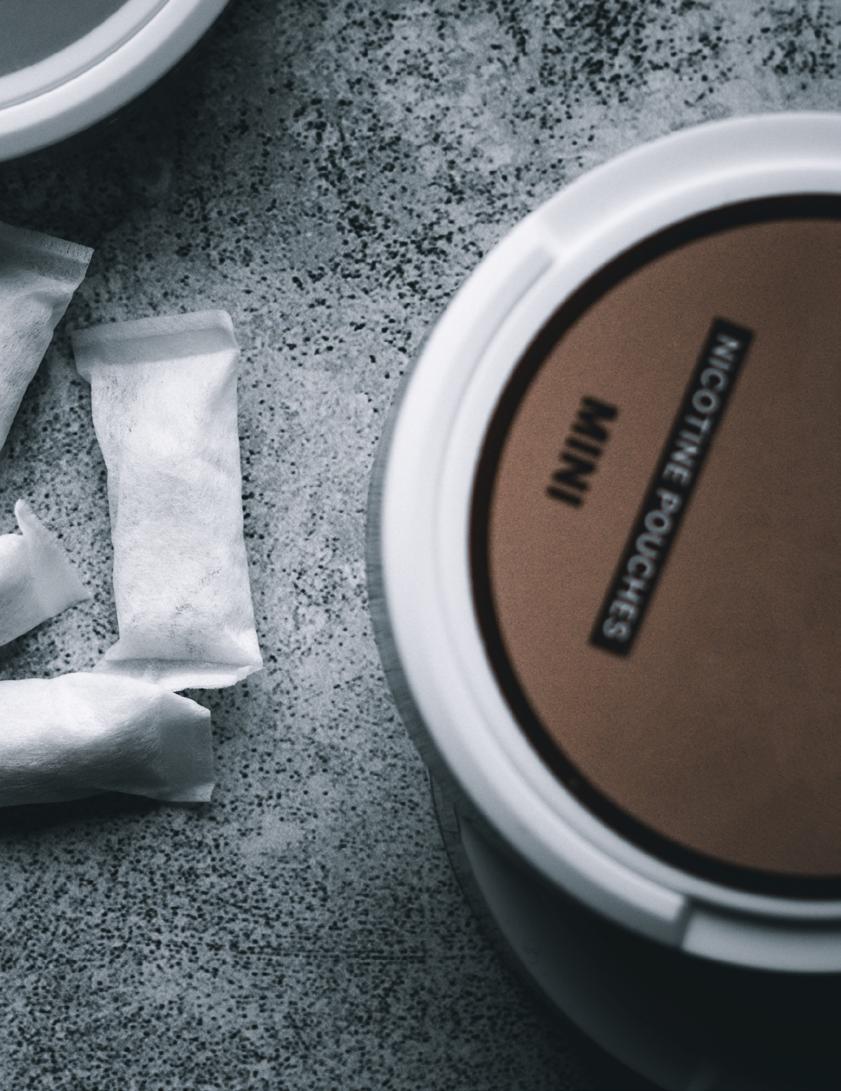
Nicotine pouches are a convenient, tasty and discreet way to use nicotine, and more consumers are discovering them every day. Unlike vaping (or smoking), they can be used almost anywhere. Nicotine pouches contain no tobacco, and are part of the new “modern oral” nicotine product category, along with some nicotine lozenges and gum.
The American market for nicotine pouches has expanded rapidly over the last couple years, with new brands appearing regularly. Our short list is based on products we’ve

Made in Sweden, and sold in the U.S. by Altria subsidiary Helix Innovations, on! is one of the most popular and widely distributed pouch brands. They come in seven flavors and five nicotine strengths, ranging from 1.5 to 8 mg per pouch. The pouches, which come in packs of 20, are very small. Helix says they provide 20 minutes of flavor.
tested, and includes the biggest and most popular U.S. brands. Each brand differs slightly in flavor and nicotine strength options.
ZYN is the original nicotine pouch, manufactured in the U.S. by snus market leader Swedish Match. Available in 10 flavors, ZYN pouches come 15 to a can, and are available in 3 and 6 mg strengths. ZYN is the most popular pouch brand in the U.S., and is widely available online and in convenience stores. The manufacturer says flavors last 30 minutes.
 ZYN
ZYN

American-made Rogue pouches are sold in four flavors and two nicotine strengths, 3 and 6 mg. They are the largest-sized pouch sold in the U.S.—close to twice the size of an on! pouch—which some people love and some don’t. There are 20 Rogue pouches in each classy metal tin.
The original VELO pouches (available now only in mint and citrus flavors) are packaged 15 to a metal can, and sold in 2 and 4 mg strengths. Last year, Reynolds American (R.J. Reynolds, now a subsidiary of British American Tobacco) bought American pouch manufacturer Dryft, and incorporated all eight Dryft flavors into the VELO line. The pouches formerly known as Dryft are sold in a round plastic can of 20 VELO pouches. The new flavors are available in 2, 4 and 7 mg strengths (the 7 mg ones are branded VELO MAX).minutes.


NIIN is made with synthetic nicotine, and is the only brand in our roundup that is pre-moistened, or “primed,” which is more common among European brands. The five NIIN flavors are available in 3 or 6 mg strengths, and last about 30 minutes. Each can contains 20 pouches.
Based on Swedish snus “portions,” nicotine pouches are thin, porous fiber bags containing a food-grade filler material similar to chewing gum, flavorings and pharmaceutical-grade nicotine. The most popular flavors are various kinds of mint and wintergreen, citrus, cinnamon, coffee and fruit. While they don’t contain any tobacco leaf, pouches fall under FDA tobacco authority. Like snus, they don’t require the user to spit.
Lucy
Lucy is an emerging name in alternative nicotine products. Started in 2019, Lucy makes gums, lozenges, and pouches. The Lucy pouches are aimed at flavor chasers that also want that jolt of nicotine that can be felt. With three tasty flavor options, Lucy pouches come in the slim variety and are available in 4 mg and 8 mg strengths.

Nicotine pouches are placed between the inner cheek and gum, and once moistened, they deliver flavor to the taste buds and nicotine to the blood vessels in the mouth. The flavor and nicotine release generally lasts between 30 and 60 minutes. When the flavor dissipates, you throw them in the trash, or keep them in the “catch lid”—a hiding place for used pouches copied from snus cans.
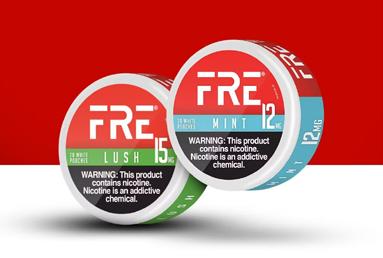
One of the many new brands using synthetic nicotine, FRĒ has two nicotine options—9 and 12 mg. The high nicotine levels appear to be aimed at smokers who want to quit and high-nicotine vapers. The company says FRĒ pouches last 45 minutes. They come in five different flavors, 20 to a package.
Like NIIN and FRĒ, FR3SH uses synthetic nicotine in its pouches, which are available in four flavors and two nicotine strengths, 4 and 6 mg. Each package contains 20 pouches, which FR3SH says last 30 minutes.

Can they help me quit smoking or vaping?
While nicotine pouches are not approved as nicotine replacement therapy (NRT) products like pharma-made gum and patches, they can—like vaping—serve as an alternative to smoking for nicotine users who want to quit cigarettes. A tasty nicotine pouch can keep your cravings at bay, making it easier to quit cigarettes (or vapes).
Do nicotine pouches give you a buzz?
It’s possible to get buzzed from nicotine pouches, depending on your personal nicotine tolerance. They come in multiple strengths, so it’s relatively easy to figure the right amount with experimentation. If you’re a light vaper or an occasional smoker, 2 or 4 mg pouches may be best. People who use highstrength nicotine salts or smoke regularly will probably gravitate to high-strength pouches (6 mg or higher). Nicotine-naive users are likely to experience more of the unpleasant side effects of nicotine, like stomach pain or esophageal discomfort (heartburn).
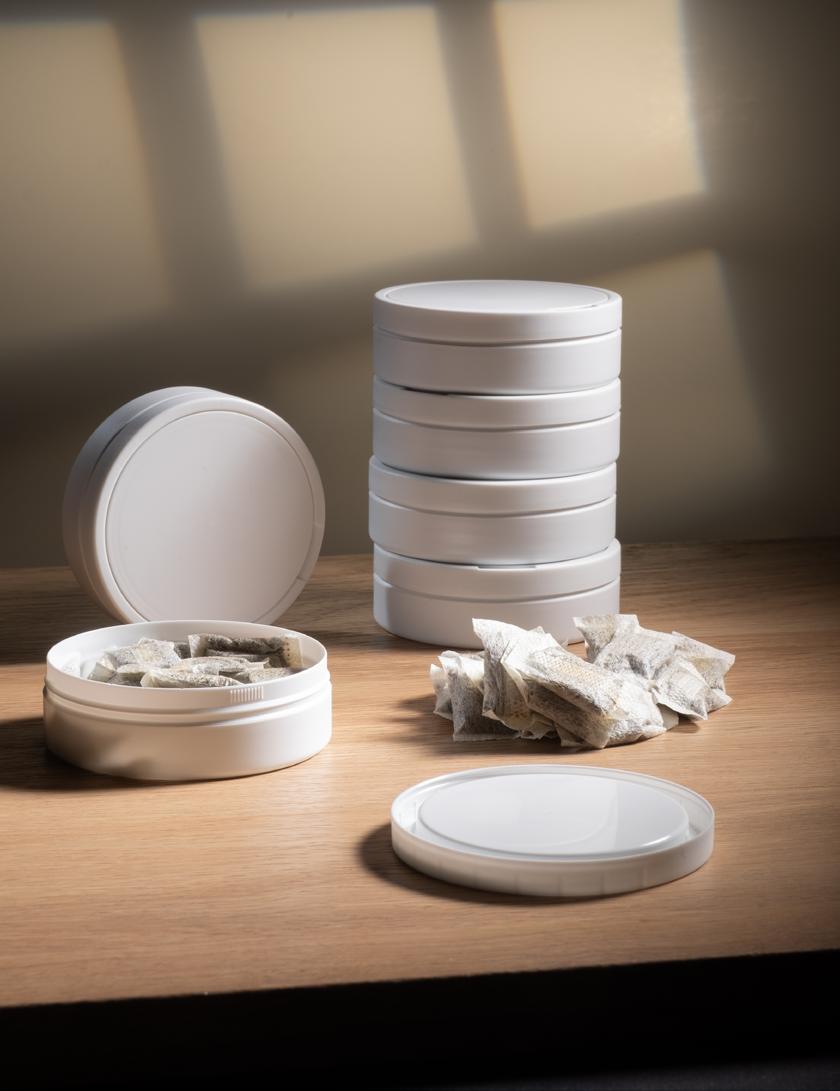
From the original ZYN to the flavorful offerings of on! and Rogue, explore a wide array of tastes and strengths. Nicotine pouches provide a discreet, tobacco-free alternative for satisfying nicotine cravings anywhere, anytime.
Using a nicotine pouch is as easy as it gets. In fact, the hardest part will probably be figuring out how to open the package! Here are some tips for getting the best experience with them.
Use the appropriate strength for your nicotine tolerance level. Remember that you’ll keep absorbing nicotine for a while after you remove the pouch from your mouth—so start low!










